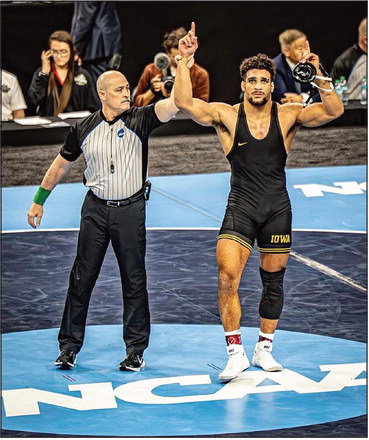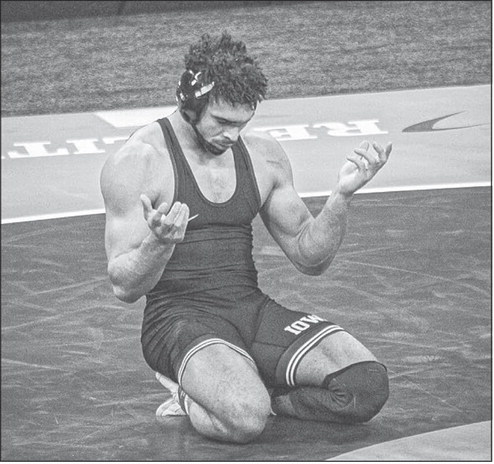Greenwood, Loyal school boards hear joint athletic trainer proposal
By Valorie Brecht The Greenwood and Loyal school districts are considering what it would look like to share an athletic trainer, with an aim of injury prevention.
At their respective meetings on April 22, the Loyal and Greenwood school boards heard from Sophie Mertins, who is in the process of finishing up her master of science degree in sports medicine/athletic training from UW-Eau Claire. Recently, Mertins approached the district administrators of both school districts to see if the districts had any interest in sharing her as an athletic trainer for the upcoming school year. Mertins then presented at the school board meetings, not for the boards to make any decisions at that time, but simply to provide information.
Both districts found themselves in a challenging spot last year after Marshfield Clinic Health System decided to discontinue its free athletic trainer service to several area schools. As a solution, the Loyal, Greenwood and Neillsville school districts entered into a shared agreement with an athletic trainer for the 2023-24 school year. The current trainer visits each school for two hours a week to see any athletes who need to be looked at, and is paid at an hourly rate. She does not attend any games.
However, the current arrangement is significantly pared down from what the schools had through Marshfield Clinic.
“With Marshfield Clinic, we had a trainer here two or three days a week and some games. That trainer was split between two schools or even sometimes three schools,” wrote Loyal School District Administrator Chris Lindner in an email.
With Mertins, the schools would be getting at least as much coverage as they had with Marshfield Clinic, if not more, as she would be looking to work full-time between the two schools.
Mertins said her main purpose would be to “coordinate and implement injury prevention programs for each sport.” Given that most student-athletes participate in multiple sports, she would look for similarities between sports and how students could cross-train to prevent injury.
“So my focus would be prevention and if an injury does occur, to help rehabilitate that athlete and get them back to practice as soon as we can,” she said.
Mertins said she would hope to get 40 hours a week between the two schools. Her schedule could look like her coming to school sometime in the afternoon, about an hour before school gets done, and if athletes were done with their schoolwork for the day, she would work with them on rehabilitation before practice starts. She would stay for practice or, if it was a game night, travel along to games.
When having to choose which athletic events to attend, she said she would opt for the one with the higher risk of serious injury. With football being combined this fall, she said she could attend all practices and games, if that’s what the schools wanted, because football has a higher injury rate.
“For all the home competitions, wherever the competition is at, I would be that team’s home athletic trainer,” she said.
One of the board members asked how much it would cost. Mertins said the average salary for a position such as hers is $40,000 to $50,000 per year. She also said there would be some extra upfront costs such as purchasing a table, medical kit and other equipment for each school.
Please see Athletic trainer, page 14 Athletic trainer,
from p. 11 “So upfront I know it is a lot of money to hire an athletic trainer, but in the long run there are a lot of legal considerations that need to be looked at. This includes any injury that may happen, to not only our athletes but others. If we look back at this past football season, you’ve all heard of Damar Hamlin and what happened with him. So that is a rare, not super rare, but more rare condition where if you are struck in the chest at a certain time in your heartbeat, you collapse and you will die. So without the athletic trainers there providing CPR, that is a time that we could have seen something really bad happen. So it’s not super common like an ankle sprain, but it is something that could happen to any of our athletes… This is where I would come in and help save us from getting any of these legal issues,” said Mertins.
She said the average response time for EMS in the county was 20 minutes. On the other hand, she said, if a person collapses and there is no heartbeat detected, CPR needs to be done within 10 minutes or the patient is not going to survive.
Mertins did not mention whether or not local schools already had emergency medical services on site at athletic events. The Loyal Ambulance Service attends Loyal home football games and the Greenwood Ambulance Service attends Greenwood home football games.
Mertins said she had the potential to save the district a lot of money in the event of a medical emergency.
Mertins also said she and Lindner had discussed her potentially substitute teaching for subjects like physical education, health, or anatomy and physiology, or possibly giving a special lecture for the body structure and function class. She said she felt she could be of assistance if the subject was health related.
She would also like to start an emergency training program with school staff and emergency medical responders for both communities. Before every season or whenever it was most convenient, she would like to meet with the involved individuals and talk through a plan for a medical emergency. She could also provide basic medical training to staff members. Going along with that idea of emergency preparedness, she expressed interest in coordinating a mock accident scenario at one or both schools.
She would be willing to lead a staff wellness program focusing on nutrition, exercise and healthy habits. For example, she said there could be a competition between the school districts to see which one could get the most steps.
Loyal School Board member Matt Kubista asked if there was any current budget for an athletic trainer or if it was something the school district would have to budget for.
“We would have to budget. We do have a small budget right now for it, but when Marshfield Clinic did it, that was donated basically by Marshfield Clinic but they got the referrals for the most part. So it would be an added cost, but I think exactly what she said — when you deal with liability and things like that, injuries…” said Lindner.
“No, I agree. It’s yeah, can we find the money in the budget? I agree,” said Kubista.
Fellow board member Tom Odeen said he would like to see a hard copy itemized budget of how much it would cost to make this happen, including one-time equipment costs. He also asked if Mertins was associated with any clinic or organization.
Mertins said she was part of the National Athletic Trainers Association and Great Lakes Athletic Trainers Association, so she could reach out to that network if additional people were needed for an event or to fill in for her if she was gone. She also said she knew people through her program at UW-Eau Claire who could help.
Board member Derek Weyer asked about holding a parent meeting. Mertins said she would be in favor of that and would like to do a pre-participation health screening with each athlete if possible. That would provide baseline data that she could compare to, should an injury occur.
Kubista asked if Mertins needed to complete additional training to retain her certification, and if the school district would be expected to pay for the training.
Mertins has to complete 50 hours of continuing education within two years, and she said one of the easiest ways to do that was to go to an athletic trainer convention. She said she could discuss with the school districts about being reimbursed for conventions or how they wanted to handle that.
The school boards haven’t decided if they want to pursue a shared full-time athletic trainer yet. The full details of any joint agreement would need to be worked out, the boards would need to vote to approve the position and the job would need to be posted before moving forward.






